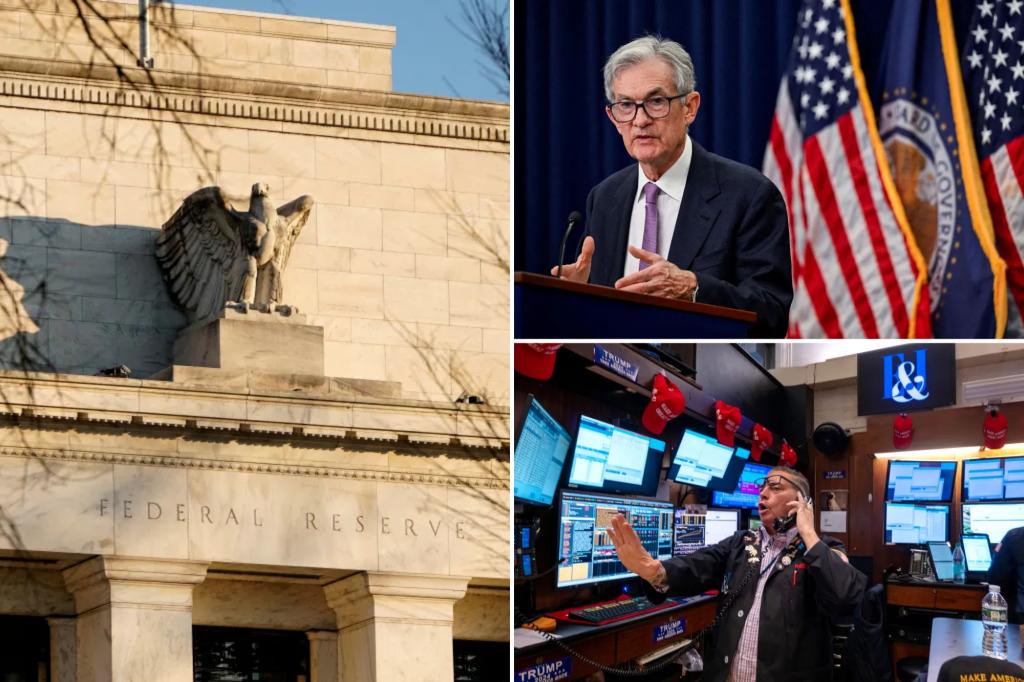Paragraph 1: The Federal Reserve’s December 2024 Rate Cut and Forward Guidance
The Federal Reserve (Fed) concluded its 2024 monetary policy adjustments with a 0.25% reduction in its key lending rate, setting the target range between 4.25% and 4.5%. This widely anticipated move marked the third consecutive rate cut in as many months, signaling a shift in the Fed’s stance from aggressive easing to a more cautious approach. While acknowledging progress in taming inflation, the Fed expressed some reservation, noting that inflation, though trending downwards, "remains somewhat elevated" above its 2% target. This cautious tone suggests a potential slowdown in the pace of future rate cuts as the central bank carefully assesses the evolving economic landscape.
Paragraph 2: The Fed’s Evolving Stance on Inflation and the Labor Market
The Fed’s December decision reflects a nuanced assessment of both inflation and labor market dynamics. Earlier in the year, the central bank expressed "greater confidence" in achieving its inflation target, prompting larger rate cuts. However, recent upticks in key inflation figures have tempered this optimism, leading to a more measured approach. The Fed acknowledged an easing in labor market conditions, with unemployment rising slightly while remaining relatively low. This delicate balancing act highlights the Fed’s dual mandate of maintaining price stability and maximizing employment. The removal of the "greater confidence" language underscores the Fed’s recognition of the persistent inflationary pressures and the need for a data-driven approach to future policy decisions.
Paragraph 3: Mixed Economic Signals Complicate the Fed’s Outlook
The Fed’s decision comes against a backdrop of mixed economic signals. While inflation had shown signs of cooling earlier in the year, November’s Consumer Price Index (CPI) registered a 2.7% increase, marking the second consecutive month of rising inflation and exceeding October’s 2.6% figure. This resurgence in inflationary pressures presents a challenge for the Fed, as it attempts to navigate a path towards its 2% target without jeopardizing economic growth. Meanwhile, consumer spending remained robust, with retail sales exceeding expectations in November. This resilience in consumer activity provides a counterpoint to the concerns surrounding rising inflation and suggests continued strength in the overall economy.
Paragraph 4: Labor Market Uncertainties and Political Pressures
The evolving labor market landscape presents additional complexities for the Fed. While unemployment remains low, hiring rates and job openings have declined throughout the year, and job growth in key sectors has stagnated. These trends raise concerns about the overall health of the labor market and its potential impact on future economic growth. Adding to the pressure, then President-elect Donald Trump publicly advocated for more aggressive rate cuts, creating a potentially challenging political environment for the central bank. The Fed’s decision to proceed with a more measured approach despite these external pressures demonstrates its commitment to data-driven policymaking and its independence from political influence.
Paragraph 5: Navigating the Path to a "Soft Landing"
The Fed’s primary objective remains achieving a "soft landing" for the US economy – a scenario where both inflation and unemployment remain low without triggering a market downturn. This delicate balancing act requires careful calibration of monetary policy, particularly in the face of uncertain economic conditions. The resurgence of inflation in recent months poses a significant challenge to this goal, requiring the Fed to remain vigilant in monitoring inflationary pressures and adjusting its policy accordingly. The central bank’s cautious approach reflects its recognition of the potential risks associated with both persistent inflation and a weakening labor market.
Paragraph 6: Looking Ahead to 2025 and Beyond
The economic outlook for 2025 and beyond is clouded by uncertainty, with various factors potentially influencing the Fed’s future policy decisions. Concerns about the potential impact of trade policies and immigration policies on inflation add to the complexity of the economic landscape. The Fed’s ability to navigate these challenges and maintain its dual mandate of price stability and maximum employment will be crucial for the long-term health of the US economy. The central bank’s ongoing assessment of economic data and its willingness to adjust its policy stance as needed will be critical for achieving a sustainable economic trajectory. The Fed’s commitment to transparency and clear communication will also be essential for maintaining market confidence and ensuring the effectiveness of its monetary policy actions.

